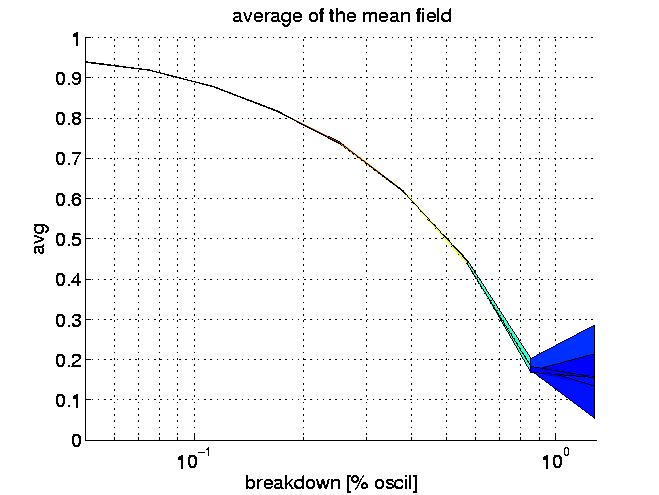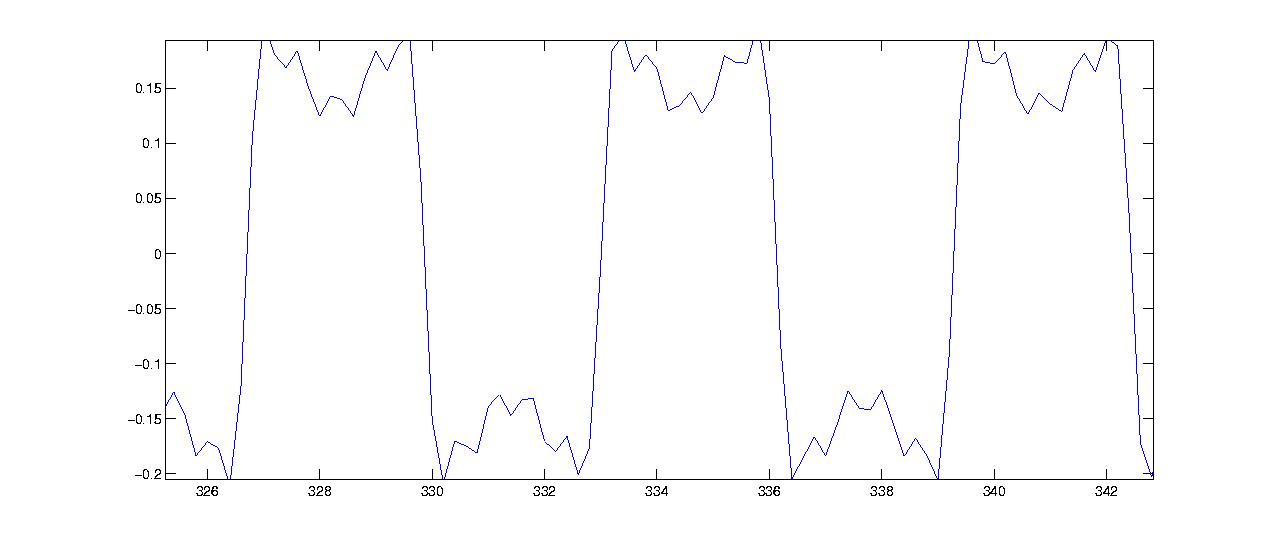Biorobotics Laboratory BioRob
ROBUSTNESS IN POPULATION OF COUPLED OSCILLATORS
Jérôme Guerra, Master Thesis, winter 2004-2005
Supervisors : Jonas Buchli and Auke Jan Ijspeert
abstract
This report is an exploration of the robustness of populations of coupled amplitude controlled phase oscillators (ACPO). This kind of system presents interesting properties for robustness against perturbations. To show this robustness, I propose a model of perturbations like exposition to heat, local breakdowns or aging. Then I present results, obtained with the numerical simulation of the behavior of, populations of oscillators under this model of perturbations, and I propose two applications: a robust sinus wave generator and a robust square wave generator. The results are discussed in terms of profit or loss of the system's robustness. This work has been done in the frame of the Master Thesis in Computer Sciences at Swiss Federal Institute of Technology.
Results
All results presented have produced by the numerical integration of the differential equation of a population of coupled ACPO. The coupling is variable from no coupling to globally coupled.
The essential part of this work consists in observation of the behavior of such system, population of oscillators, under the effects of perturbations.
The perturbations implemented are :
-Thermal noise
-Component aging
-Fabrication fault
-Breakdowns
Sinus wave generator

The first application made with a population of coupled oscillators is a sinus wave generator.
Previous figure shows the the lost of synchronization due to an increase of fabrication default.
Breadowns

The sinus wave generator presents a astonishing robustness to breakdowns. For example in the case presented where breakdowns are on oscillators. As one can see the degradation of the system (synchronization) is linear but the frequency of the generator remains erfectly stable until more than 70% oscillators breaks.
Square wave generator

The square wave generator is built with a bi-clustered population of ACPO.
In order to approximate the Fourier series of a square wave, the second cluster contains oscillators with a three times higher intrinsic frequency than the second cluster, and is also composed by three times less oscillators.
Previous figure is the mean field resulting.
 With a population with five clusters the approximation is, as you can see in previous figure, better.
With a population with five clusters the approximation is, as you can see in previous figure, better.
- Archived student projects
- Alain Dysli
- Alexandre Tuleu
- Anurag Tripathi
- Ariane Pasquier
- Aïsha Hitz
- Barthélémy von Haller
- Benjamin Fankhauser
- Benoit Rat
- Bertrand Mesot
- Biljana Petreska
- Brian Jimenez
- Christian Lathion
- Christophe Richon
- Cédric Favre
- Daisy Lachat
- Daniel Marbach
- Daniel Marbach
- Elia Palme
- Elmar Dittrich
- Etienne Dysli
- Fabrizio Patuzzo
- Fritz Menzer
- Giorgio Brambilla
- Ivan Kviatkevitch
- Jean-Christophe Fillion-Robin
- Jean-Philippe Egger
- Jennifer Meinen
- Jesse van den Kieboom
- Jocelyne Lotfi
- Julia Jesse
- Julien Gagnet
- Julien Nicolas
- Julien Ruffin
- Jérôme Braure
- Jérôme Guerra
- Jérôme Maye
- Jérôme Maye
- Kevin Drapel & Cyril Jaquier
- Kevin Drapel & Cyril Jaquier
- Loïc Matthey
- Ludovic Righetti
- Lukas Benda
- Lukas Hohl
- Lukas Hohl
- Marc-Antoine Nüssli
- Martin Biehl
- Martin Riess
- Martin Rumo
- Mathieu Salzmann
- Matteo Thomas de Giacomi
- Matteo Thomas de Giacomi
- Michael Gerber
- Michel Ganguin
- Michel Yerly
- Mikaël Mayer
- Muhamed Mehmedinovic
- Neha Priyadarshini Garg
- Nicolas Delieutraz
- Panteleimon Zotos
- Pascal Cominoli
- Pascal Cominoli
- Patrick Amstutz
- Pedro Lopez Estepa
- Pierre-Arnaud Guyot
- Rafael Arco Arredondo
- Raphaël Haberer-Proust
- Rico Möckel
- Sacha Contantinescu
- Sandra Wieser
- Sarah Marthe
- Simon Blanchoud
- Simon Capern
- Simon Lépine
- Simon Ruffieux
- Simon Rutishauser
- Stephan Singh
- Stéphane Mojon
- Stéphane Mojon
- Sébastian Gay
- Vlad Trifa
- Yvan Bourquin
